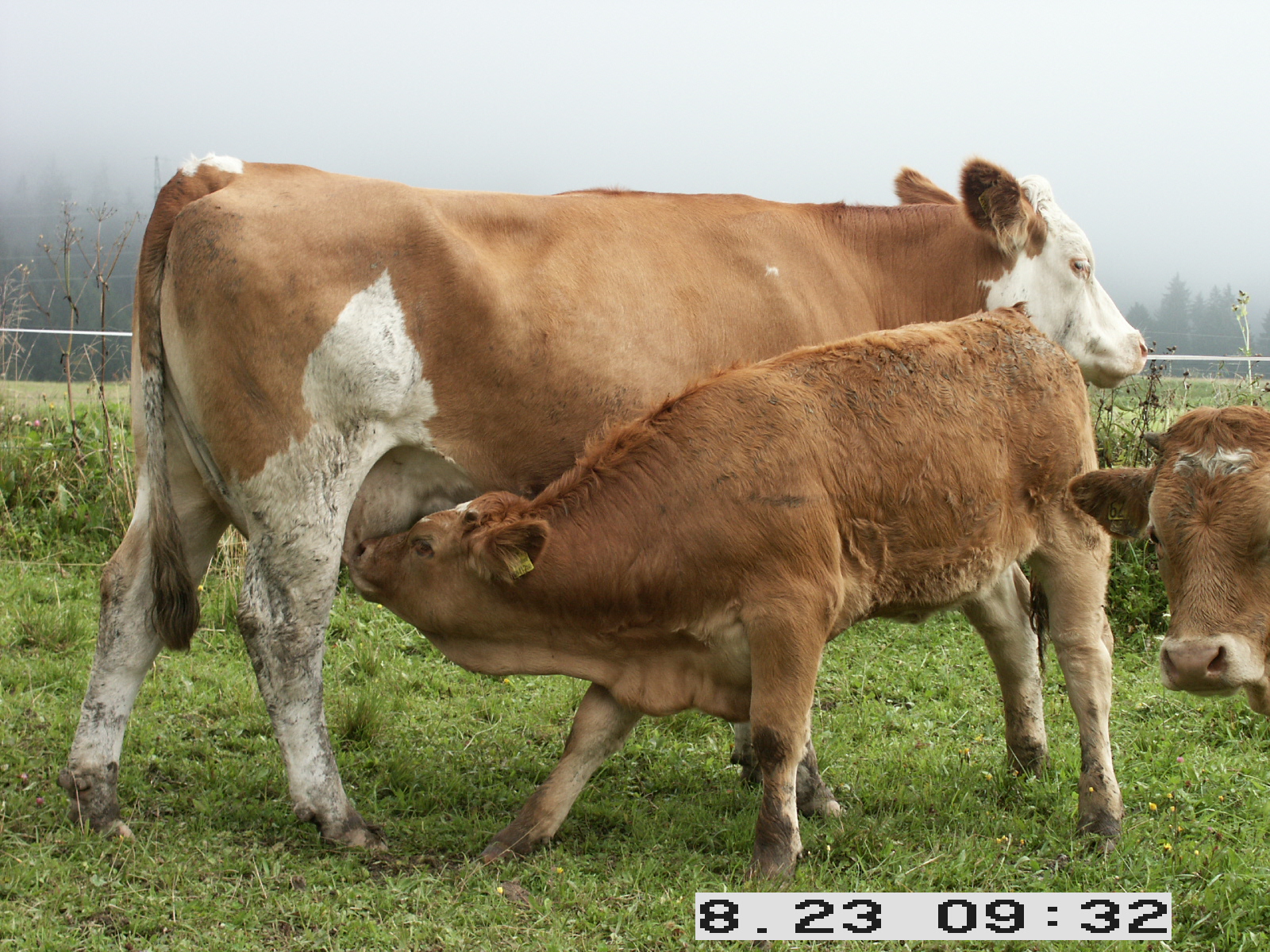With full-day grazing, the animals stay on the pasture practically all day or dairy cows only come into the stable during milking time - the grazing period is therefore 20-24 hours per day.
This process requires the largest amount of pasture area per animal. In practice, farmed areas are grazed all day by breeding or fattening animals, suckler cows or dry cows.
Pasture feed is the sole or main type of feed. Higher-performing animals graze on good locations; pasture management attaches great importance to high and consistent feed quality. Extensive locations can be grazed very well and sustainably with low-performing animals (breeding, dry cows, etc.).
When grazing all day, feeding time in the stable is limited or eliminated entirely. When stable time is limited, there is often not enough time to absorb minerals (e.g. cattle salt, trace elements, etc.) to eat them. Here these must be offered on the pasture via lickstones (protected from rain). In addition, constant access to clean water is necessary.
Advantages of full-time grazing:
- Little or no feeding work
- Less stable work
- Less costs
- Quiet grazing animals
Disadvantages of all-day grazing:
- There must be plenty of grazing area
- Individual animal performance, especially in dairy farming (quantity, ingredients), is limited
- Fluctuations in pasture forage quality have a greater impact on performance, and pasture management is very important
- Increased observation effort in the pasture
An Excel form is available to estimate the space required for short grass pasture or paddock pasture.
Full pasture farming is a special form of all-day grazing. Fully pasture farms strive for the most cost-effective production possible and a high proportion of pasture feed in the annual ration. On these farms, full-time grazing with little or no supplementary feeding and seasonal calving is common.






